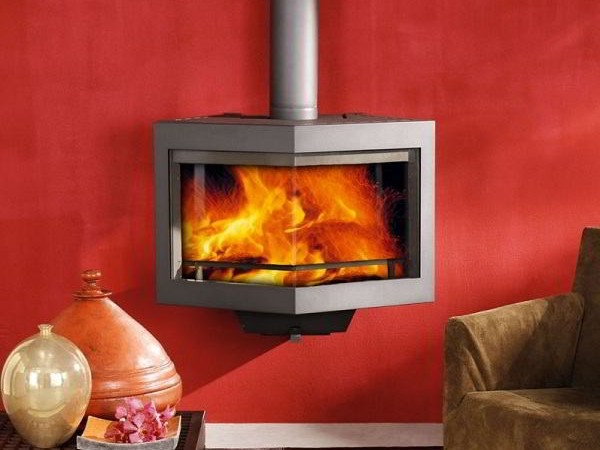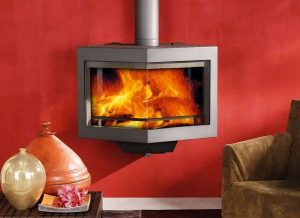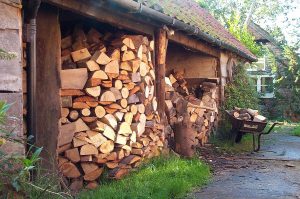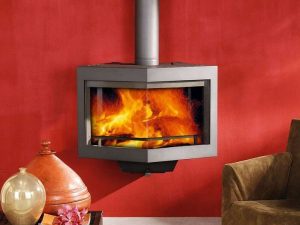Unsure where to start when it comes to second-hand stoves? Mark Benson of Bowland Stoves explores the pros and cons of the second-hand wood and multi-fuel stove market and what you should consider ahead of a purchase.
The fact that traditional wood-burning and multi-fuel stoves use natural fuel which can be replaced, such as wood, adds to the eco-friendly element of the industry. To further reiterate its eco-friendly credentials, there is a growing demand for second-hand stoves which are effectively being recycled by their original owners. So, what are the pros and cons of the second-hand stove market?
Durability
Those who have looked into second-hand stoves will be well aware that improvements in manufacturing techniques have increased the life of the traditional wood-burning and multi-fuel stove. These items are made from cast iron, which is extremely durable and long-lasting, not to mention highly efficient for the purpose of stoves. So, while you do have to be wary when acquiring second-hand stoves the durability of the core structure is not necessarily an issue.
Spare parts
On the whole there are spare parts available for each and every stove on the market today and for many which are no longer readily available. There are specific areas of the modern day stove which will need replaced on a regular basis such as seals, fire bricks, etc. You therefore need to ensure that there are still spare parts available in the UK if the second-hand stove you are looking to acquire is relatively old or perhaps no longer in production. There is a buoyant market in non-branded spare parts but you need to be careful that the products are safe and reliable.
Cost
The cost of second-hand stoves is an interesting subject. While there is scope to grab a bargain when it comes to cost, could the best course of action be to acquire a new stove? It is now possible to buy brand-new stoves such as the Firefox and Hamlet for circa £500. In all honesty, it is unfair to call these entry-level stoves because they are well manufactured, offer excellent value for money and are proving to be very popular. Also, the cost differential between a cheap second-hand stove and the likes of a Firefox/Hamlet would be minimal. With a brand-new stove you know exactly what you are getting, while with a second-hand stove there may be some wear and tear and potential problems when removing it from its original location.
For those looking towards the more contemporary/luxury end of the market, there may well be some interesting opportunities to acquire a second-hand stove at a rock bottom price. However, as we mentioned above, you do need to be certain that there are spare parts available and the product itself has no visible damage. At the end of the day, it is only a bargain if the stove actually works!
Safety aspects
While you would hope that nobody would attempt to sell a second-hand stove which was damaged, there may be the odd occasion where the seller is unaware of potential issues. One problem to be aware of is the threat of carbon monoxide poisoning due to faulty seals and general wear and tear. All wood-burning and multi-fuel stoves today are fitted with a carbon monoxide alarm and you should always follow this course of action when acquiring a second-hand stove. There have also been issues with stoves being damaged while being removed for sale. It is quite literally a case of buyer beware, because once you have bought a stove you will have little in the way of recourse if there are problems further down the line.
Efficiency
When acquired from new, many stoves of today are able to offer efficiency ratings in excess of 80%. This means that relatively little energy is lost during the heating process but it would probably be dangerous to assume that second-hand stoves are still able to hit their original efficiency ratings. General wear and tear and loose seals are just two issues which would impact the heat output and the efficiency of any second-hand stove. Even if it still looks like a bargain, if the efficiency has fallen significantly then you will need to burn more fuel to maintain a comfortable heat. This could effectively turn a good value second-hand stove into a very expensive piece of equipment. When acquiring a second-hand stove you need to ask why the seller is disposing of the stove and whether there are any issues you should be aware of.
Summary
Even though the second-hand stove market in the UK continues to grow, there are obvious pros and cons when looking to acquire such equipment. Safety issues, costings, efficiency ratings and the availability of spare parts are just some of the factors you need to take into consideration. That is not to say there are not some good bargains in the second-hand market but you do need to go into any transactions with your eyes wide open.
Mark Benson works for Bowland Stoves. Based in Todmorden, the company offers an array of wood burning and multi-fuel stoves together with spares and accessories. Find them on Twitter at @bowlandstoves.







7 Comments
Quite new to wood burners but have bought three on ebay over last year or so, two uk made cast iron jobs for £150 ea that needed seals and firebricks and an unused sheet steel upright, quite stylish and a decent brand Wamsler, thought I’d got a steal at £200 but turns out they don’t retail for much more, dig online and buy from their low cost operation in Hungary carriage extra but a fantastic stove for the price.
Fashionable now, but mainly an air pollution disaster. A lot of that 20%+ inefficiency exits the flue as particulate matter and sooty hydrocarbons. They’re lovely to gaze at, but we really don’t want a return to the smogs of the ’50s & early ’60s if this fad takes off in dense urban areas. I can’t see how they can possibly comply with smokeless zone regulations.
Brian – I think you’re right. We’ll re-write the wood stoves topic intro soon. We need to add that they’re unsuitable for urban areas (also because of the distances that the wood needs to be transported). The carbon from the trees will get back into the atmosphere relatively quickly if they fall and rot – i.e. whether the wood is burned or not. It’s a cycle, so I don’t think that’s an issue (as long as trees are replanted to replace the trees removed for firewood – which isn’t always the case). And the particulates will need a bit of maths. Particulate (etc.) pollution from natural forest fires must be huge. But with such a large human population, multiplied by about 5-10 acres of woodland required to provide firewood sustainably per household, and not in urban areas, it’s not for everyone.
My family are subject to the carcinogenic pollution from log burners every winter. This “smokeless zone area” where we live used to be safe. But since DEFRA approved log burners for use in our area we now hate living here. They are nothing but a pollution nightmare. I purchased a particulate monitor and it can reach “severely polluted” when our neighbours log burner is lit. My Wife has cancer and struggles to breath. Why should she be subject to massive amounts of pollution just so the neighbours can entertain themselves with a log burner in a centrally heated house? It’s totally wrong and the sooner the public wake up to the real facts about log burners the better.
See woodsmokepollution.org to see the truth about burning wood.
Colin – I agree with you, urban areas are not the right place for wood stoves, not just because of particulates, but also the fact that the wood will have to be transported long distances. But in rural areas, they represent a renewable way to heat space, in a way that is not controlled by large energy corporations. Decentralisation of energy is important, which is why we promote solar electricity and thermal etc. as well as wood stoves. I lived in a rural intentional community and all my heat was provided by wood every winter for 13 years. Kept me warm when I cut and spit it too.
And I completely agree that no house with central heating should ever have a wood stove.
Firstly thank you for you’re article. Sadly woke society has jumped all over this feed. I live in the countryside on my own 17 acre plot where we have plenty of our own wood to burn. I opened this to see if it’s a good idea to install a used log burner. That’s what the article is about. Anyone commenting on whether people should is not relevant to the feed. I would love more information on the qualifications required to get someone in to fit a second hand stove.
Hi Nicky
1. We’re going to be producing a policy page on the use of wood for heating soon.
2. If you pop your query on the wood stoves page, we’ll get a specialist to answer it for you – https://www.lowimpact.org/lowimpact-topic/wood-stoves/
Thanks